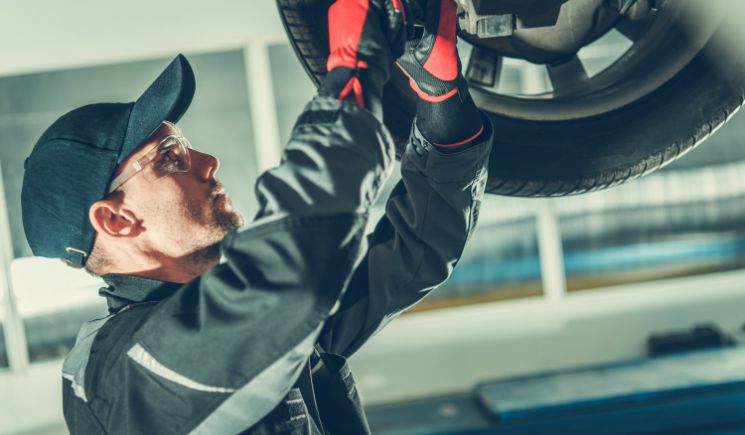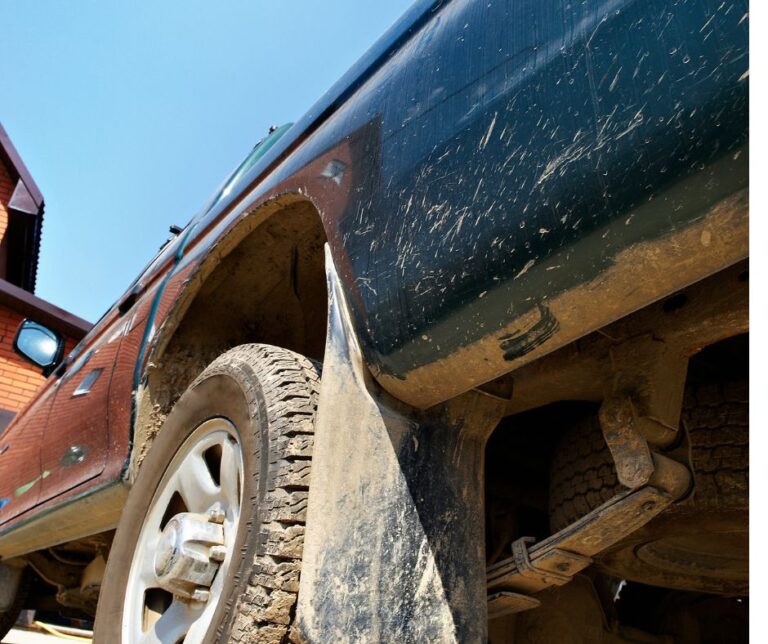Can Ball Joints Cause Tire Wear

Tire wear can have many causes, and one of them is worn ball joints.
Ball joints are critical components in the suspension system of a vehicle, connecting the wheels to the steering and suspension systems.
When they wear out from regular use, tire wear can result. In this article, we’ll discuss the signs of worn ball joints and how to prevent tire wear caused by them. By recognizing these signs early on, you can save yourself time and money down the road.
Table of Contents
- Signs of Worn Ball Joints
- Ways to Prevent Tire Wear Caused by Ball Joints
- Frequently Asked Questions
- Conclusion
Signs of Worn Ball Joints
If you’re noticing strange noises coming from your vehicle, it could be a sign that your ball joints are worn out! When the ball joint is worn out, it can cause the wheel to move in a way that will produce an abnormal noise.
The most common sound associated with faulty ball joints is a clunking or grinding noise when turning corners. These noises usually occur when the car is moving at low speeds, and they can also be heard on uneven roads.
Generally, the more severe the wear on the ball joint, the louder and more frequent these noises become.
In addition to strange sounds, another sign of a bad ball joint is excessive tire wear. Worn-out ball joints can cause tires to rub against other parts of the car as they turn due to misalignment.
This contact between the tire and other components causes friction which wears down tires quickly and unevenly.
To prevent this kind of tire wear caused by worn-out ball joints, it’s important to regularly inspect them for signs of damage and replace them if needed.
Ways to Prevent Tire Wear Caused by Ball Joints
Regularly inspecting your suspension system can help stave off the damage that can otherwise result from faulty ball joints, preserving your tires’ longevity. Good preventive maintenance habits include:
- Periodically checking and lubricating the ball joint dust cover or boot.
- Keeping an eye out for any loose parts or components like nuts, bolts, and other fasteners.
- Inspecting for signs of leaking fluid in the ball joint assembly.
- Making sure all suspension components are properly tightened to their manufacturer’s recommended torque specifications.
If you find any worn-out or damaged components during your inspection, replace them immediately to prevent further damage and avoid tire wear.
Additionally, it is important to ensure that your vehicle is properly aligned as misalignment can also cause excessive tire wear due to incorrect contact with the road surface. Ensuring proper wheel alignment will guarantee maximum tire performance and life span over time.
Frequently Asked Questions
What are the differences between a worn ball joint and a faulty ball joint?
| Condition | Characteristics | Consequences | Prevention and Recognition |
|---|---|---|---|
| Worn Ball Joints | Cause more stress on suspension components due to loose tolerances that result in excessive movement | Worn ball joints affect how tires contact the road surface, causing premature tire wear | Regular checks for excessive movement, or irregular tire wear can help recognize worn ball joints early |
| Faulty Ball Joints | Less common but severe; usually result from poor manufacturing quality, causing improper fitment or misalignment | Can lead to catastrophic failure of suspension components if not addressed immediately | Regular inspections and quality control during manufacture or purchase can help prevent or recognize faulty ball joints |
What type of tire wear is caused by a worn ball joint?
A worn ball joint can cause uneven tire wear, resulting in premature tire replacement. Uneven tire wear is typically identified by balding or cupping on the inside or outside edges of the tread.
It can also manifest as scalloping, which appears as a series of circles around the circumference of the tire.
When these symptoms are present, it’s important to have your vehicle inspected and repaired if necessary to avoid further damage and costly repairs from a faulty ball joint.
Are there any additional problems that can be caused by a worn ball joint?
Worn ball joints can cause a variety of problems, some of which you may not expect. A shocking 90% of all vehicles on the road have at least one worn ball joint.
But beyond the tire wear they can cause, these faulty components can also lead to decreased control and increased noise from your steering and suspension system.
Poorly functioning ball joints can also result in excessive vibration in your vehicle’s steering wheel, making it difficult to keep your car moving straight when driving at higher speeds. In addition, worn ball joints can put extra strain on other parts of the suspension system, leading to further damage or even complete failure if left unchecked.
What should I do if I suspect I have a worn ball joint?
If I suspect that I have a worn ball joint, the first thing I should do is take my vehicle to a qualified mechanic. The mechanic will need to inspect the ball joint for any signs of wear or damage, such as cracks or looseness in the joint.
If they find any issues, they can advise on whether it needs to be replaced and provide an estimate for the replacement cost. It’s important to replace worn ball joints to prevent further damage from occurring in other parts of my vehicle such as shocks and tires.
Conclusion
In conclusion, ball joints can cause tire wear if they are not functioning properly. Worn ball joints can throw off the alignment of a vehicle, leading to uneven tire wear.
Fortunately, it is possible to prevent this by regularly checking your vehicle’s ball joints and replacing them when necessary. Symbolically speaking, these parts are like the foundation of a building; if the foundation is weak or unstable, everything else built on top of it will suffer for it in the long run. Taking care of your car’s ball joints ensures that you won’t have to worry about premature tire wear due to misalignment.






